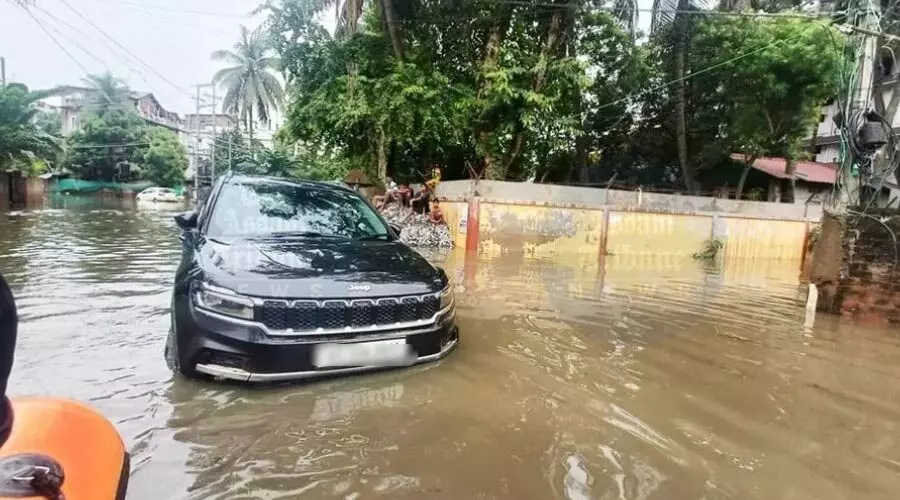Why Guwahati floods after a drizzle: A crisis of governance, not rainfall

A file image of waterlogging in Guwahati
Ahead of the monsoons, Guwahati has already witnessed two instances of flooding, that too on days that saw less than "moderate" rainfall.
The first flash floods followed around 30-40 mm of rainfall, while the second was triggered by just 20 mm of precipitation.
The capital city's capacity to handle rains has been diminishing by the day, and it is feared that the problem is poised to aggravate every year. The root causes of Guwahati's flooding are largely man-made-unplanned urbanisation, loss of wetlands, and weak governance – now intensified by the impacts of climate change.
Rapid urbanisation with increased housing and construction activities in the city has led to more rooftops, driveways, streets and other impervious or hard surfaces. The recurring phenomenon of artificial floods stems from a non-engineering approach to tackling it.
The problem is a lack of long-term vision and interest of the decision-makers in successive governments in implementing the right solutions to the problem. This, along with a lack of accountability, has led to widespread frustration over clogged drains and unfulfilled infrastructure promises.
With no proper drainage plan to cater to the city's needs, Guwahati heavily relies on the natural drainage system.
However, there is no natural flow of these channels at present, and only the domestic waste and commercial sewage are being carried away by the river.
Studies also reveal that the flooding in Guwahati's low-lying city core is also caused by uncontrolled runoff from surrounding hills, which calls for urban watershed management strategies using GIS technology and slope analysis to plan effective interventions in the hill regions.
The State Soil Conservation Department had initiated a watershed management project in collaboration with the IIT Guwahati to check the erosion and siltation that has been leading to clogging of the drainage system.
But that too did not make much headway, apparently due to government apathy. Dredging and cleaning of the existing natural drain channels continue to remain a non-priority for the government, which has been hindering storm water movement during rains. Encroachments over the drain channels have further exacerbated the problem.
The city's garbage management system is also in disarray. There is an urgent need to transition from reactive disaster responses to proactive, policy-driven urban planning with strong enforcement.
Initiatives like Mission Flood-Free Guwahati and drainage upgrades have shown some intent, but their success depends on sustained execution, rigorous oversight, and active public participation.
Without addressing core issues such as hill-cutting and wetland encroachment, short-term fixes will remain ineffective. Building a flood-resilient Guwahati requires long- term political commitment, scientific planning, and collective action. At the same time, contractors and officials must be held responsible for laxity and negligence through enforceable penalties.
